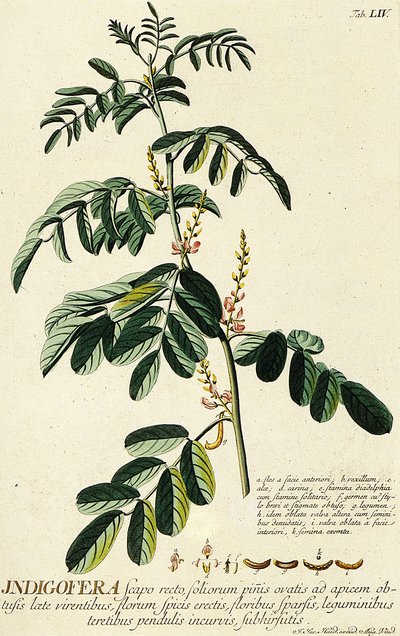Organic Dyes and Lakes
Organic colors are derived from plants and animals and form soluble dyes which can bond with a substrate such as fabric, paper or leather. In order to be used as a pigment, dyes must be precipitated onto an inert substrate such as alum to form what is called a lake.
Vegetable dyes can come from all parts of the plant: bark (oak), berries (buckthorn), hulls (walnut), leaves (indigo), roots (madder), seeds (annatto), stems (weld), or wood (logwood). Animal dyes come from ground insects such as the reds of cochineal or kermes which are harvested off of cacti or oak respectively; from insect secretions such as those that produce red lac; or from the glands of sea creatures such as the sepia ink sacs of cuttlefish or the most famously rare Tyrian purple which requires 12,000 mollusk to produce 1 gram of dye.
Natural organic dyes can be categorized according to the technique needed to fix the dyes. Substantive dyes need nothing added in order to make the dye take, usually because they are sufficiently rich in tannins. Adjective dyes, the most common, require a mordant (copper, iron, or aluminum compounds) to make the dye lightfast and permanent and different mordants can produce radically different colors from the same plant. Vat dyes appear to be the most mysterious of the processes since the color change does not occur in the dyebath. Unlike most dyes, vat dyes are naturally insoluble and need some treatment to render the color soluble, the final dying then taking place with the chemical reaction occurring upon removal from the vat and exposure to light (mollusks) or oxygen (indigo and woad).

